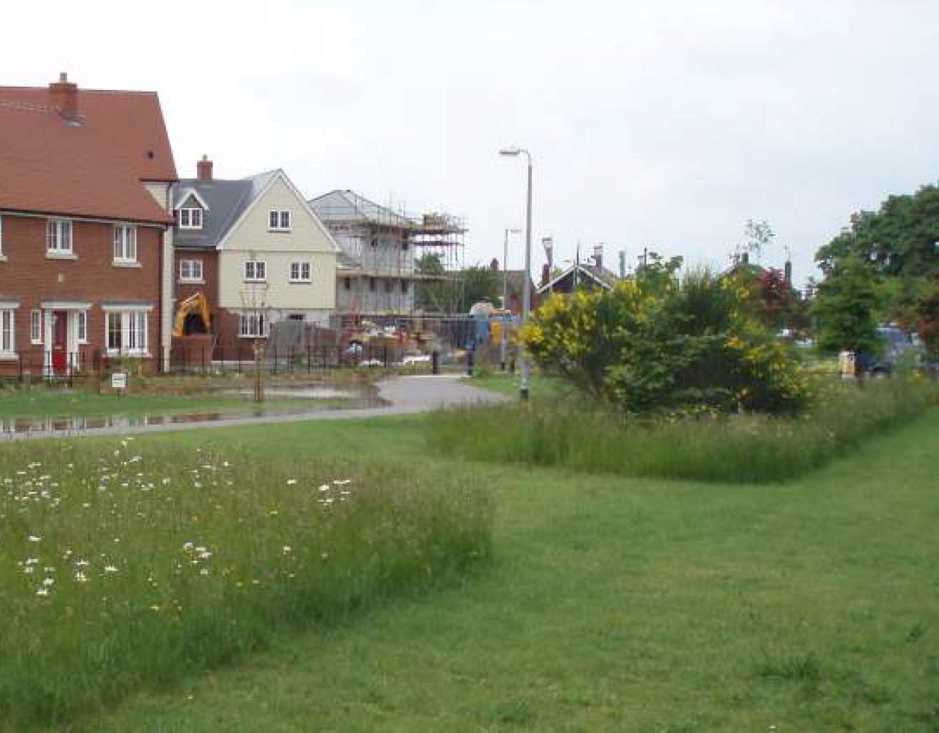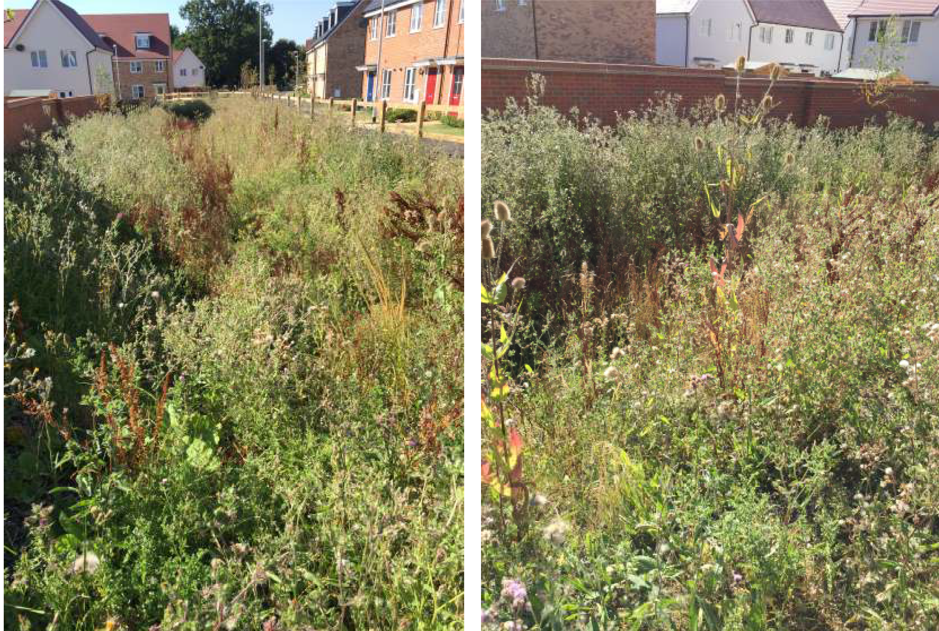Big Savings From Natural Landscapes
I’ve heard many clients say – I hate wildflower – it doesn’t work and looks a mess: That’s “poppy-cock” to coin the pun. Getting great, biodiverse wildflower areas (poppy fields) that look really colourful and full of lovely wildflower, and no weeds or mess, is easy, simple and cheap: You just have to know how to do it. It’s cheap because its just seeding, and very low cost to maintain, but the biodiversity is so good it can remove the need for biodiversity offsetting costs.
From James Blake (the Licentious Landscaper):
It is true that an area within a building site that is just rotovated and seeded and then left will become a weedy mess. All soil has up to 100 years of dormant weed seed s just waiting for disturbance – which is their trigger to germinate and grow into 6ft high choking beds of sow thistle, creeping thistle, hoary oxtongue, fat hen and poison hemlock. So, it’s no wonder some clients have had a bad experience. But that is all so unnecessary. It comes from pure bad practice and neglect of the basics. You just need to get that dormant seed to germinate and be killed off, then you’ll have a sterile soil in which you can seed the wildflowers you want to see, and without the choking, ugly and invasive weeds.
The One and Only Way to Get Seed to Succeed:
Here is the only spec. you’ll ever need for grass seeding, minus the flannel. The key here is the fallow period: If they do all of these items (all to the letter) – you’ll get an A1 result 1st time. Any wriggling from the supplier, the contractor or anyone, at any stage of this and for any reason whatsoever, you’ll get a fail and then a heap load of hassle trying to put it right – which will take years. I could tell you a few stories believe me.


- Initial grading if required to the proposed land form and levels (ground workers), following any soil movements etc from the SUDS and access.
- Cultivate the soil using a power harrow and stone rake repeatedly. Leave 2-3 days between rakes, to let soil re-settle in between to reveal the stone. (Landscaper). Remove the stones. (don’t use a stone burrier, because it will keep re-surfacing on these soils).
- Allow soil to fallow for a minimum 14 days (ideally 21), after stone raking ceases. (VITAL – Do NOT skip this).

- After 2-3 weeks of waiting, the ground will be green with ruderal, aggressive weeds, albeit they will look innocent enough at the stage they are at. However, don’t be fooled – these are vicious thugs and they need an Asbo; (Hoary ox-tongue, fat hen, sow thistle, creeping thistle, poison hemlock – clue is in the names). Spray the lot with a suitable weed killer or power harrow twice in quick succession to kill them off.
- Only when the weed is dead – will you have achieved sterile soil, free from vast amounts of dormant ruderal weed seed, just awaiting the moment of disturbance to germinate and make a mess of your site.
- Then (and only then) spread the desired seed: Seed mixes according to area. Amenity grass – use standard amenity mix (e.g. Barenbrub Bar 11);
- For wild flower areas – apply two separate seed mixes: 1.Low Maintenance Meadow Grass mix, Emorsgate EG1, but at double the recommended amount i.e. 10g/m2 – to get it looking green faster. 2. The Wild flower seed specified – Emorsgate type as per area. Sow at 5g/m2. It takes ages for wildflowers to grow from seed, and you could be waiting weeks and the MD will get upset about bare mud affecting sales. So the first extra meadow grass seed mix at double the recommended minimum is your insurance – so the site goes green fast.
News



